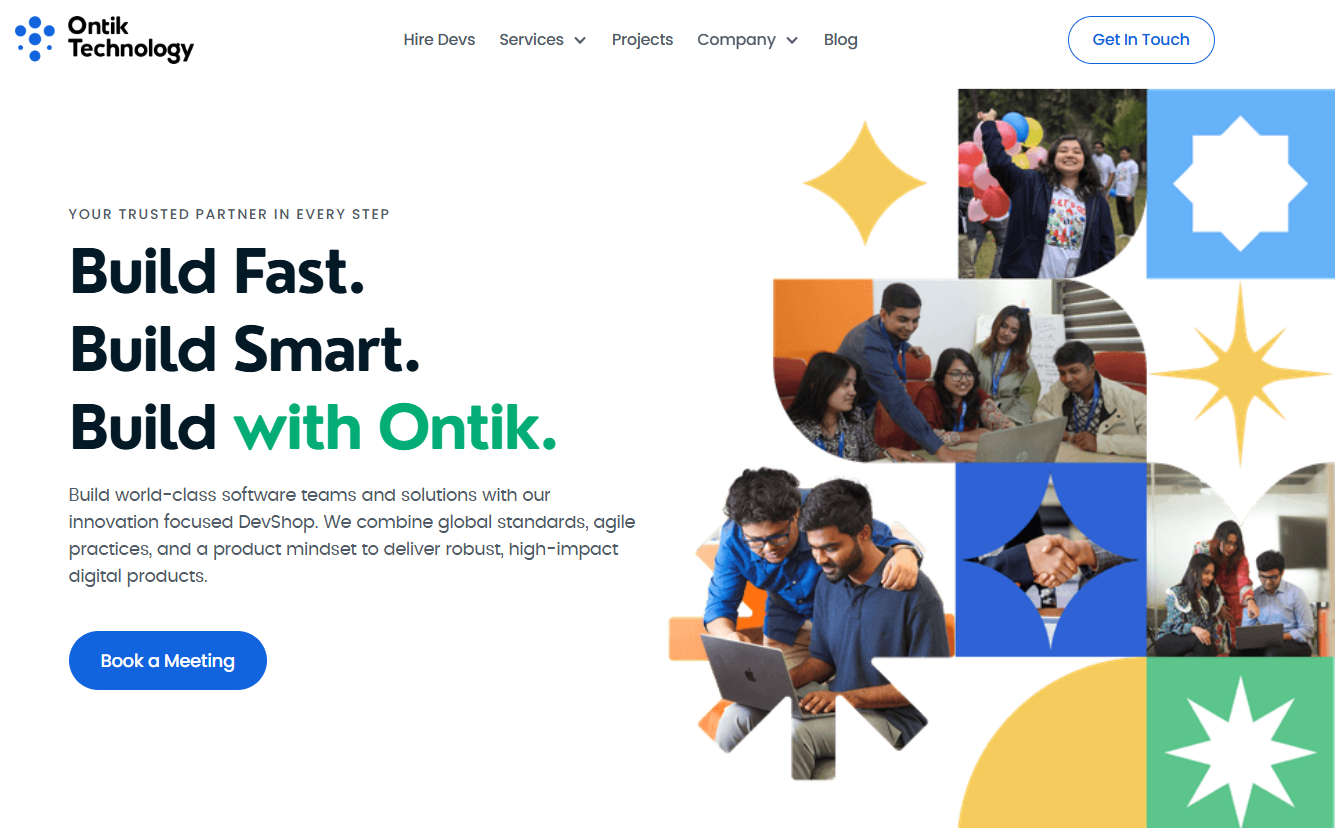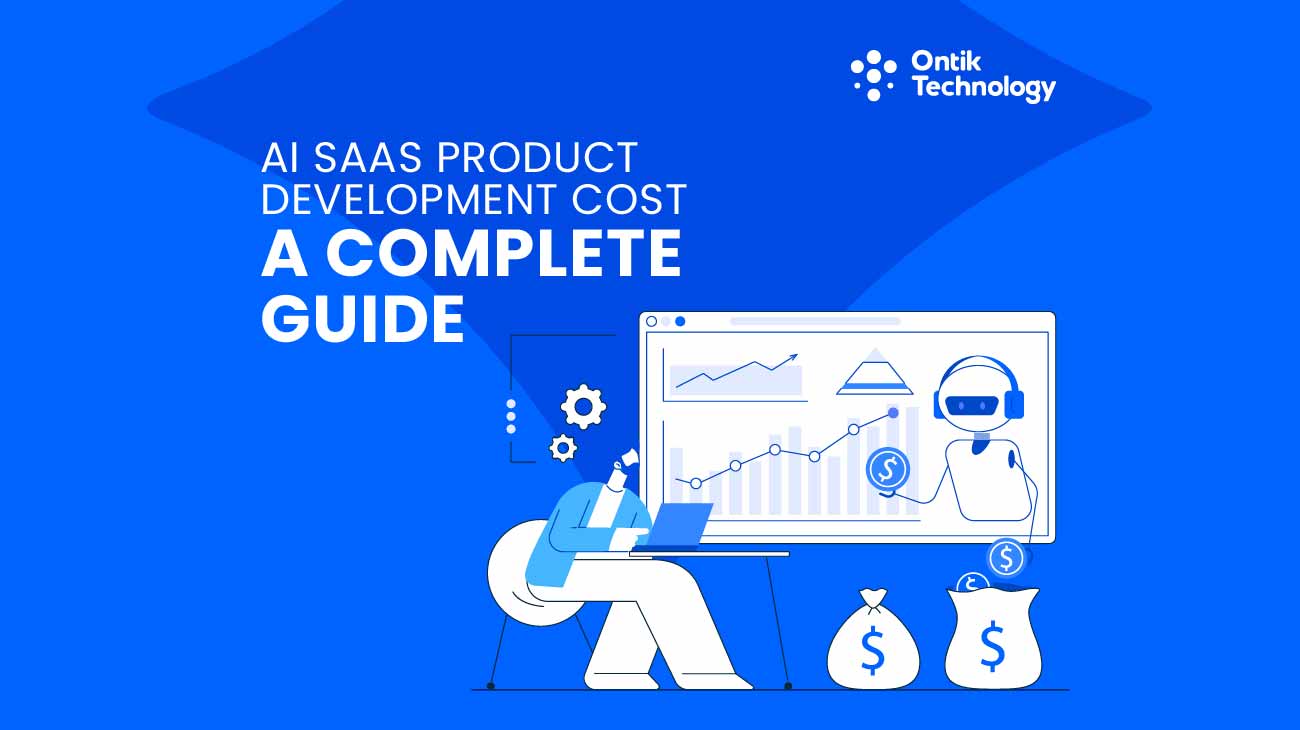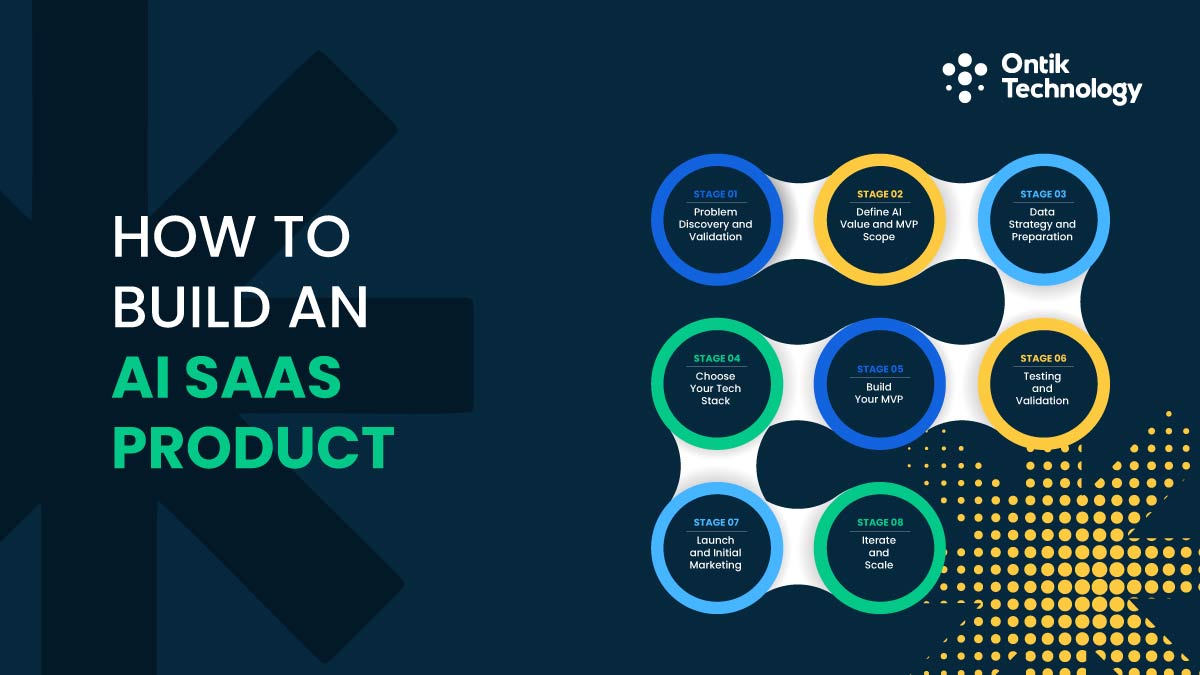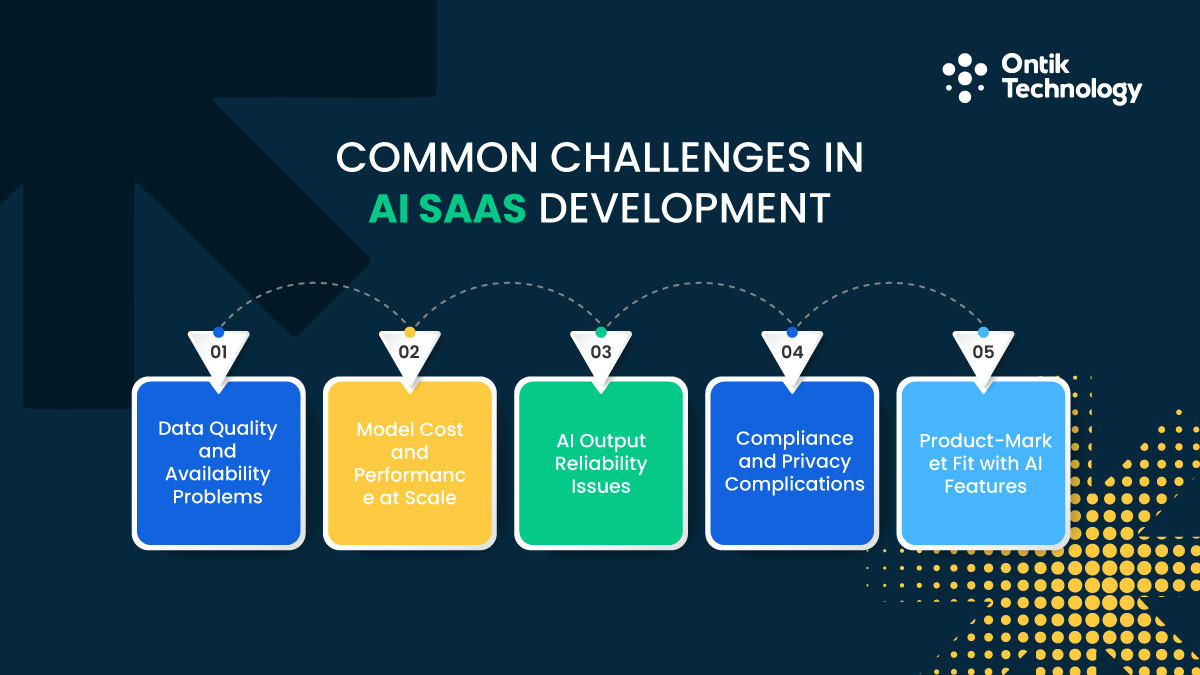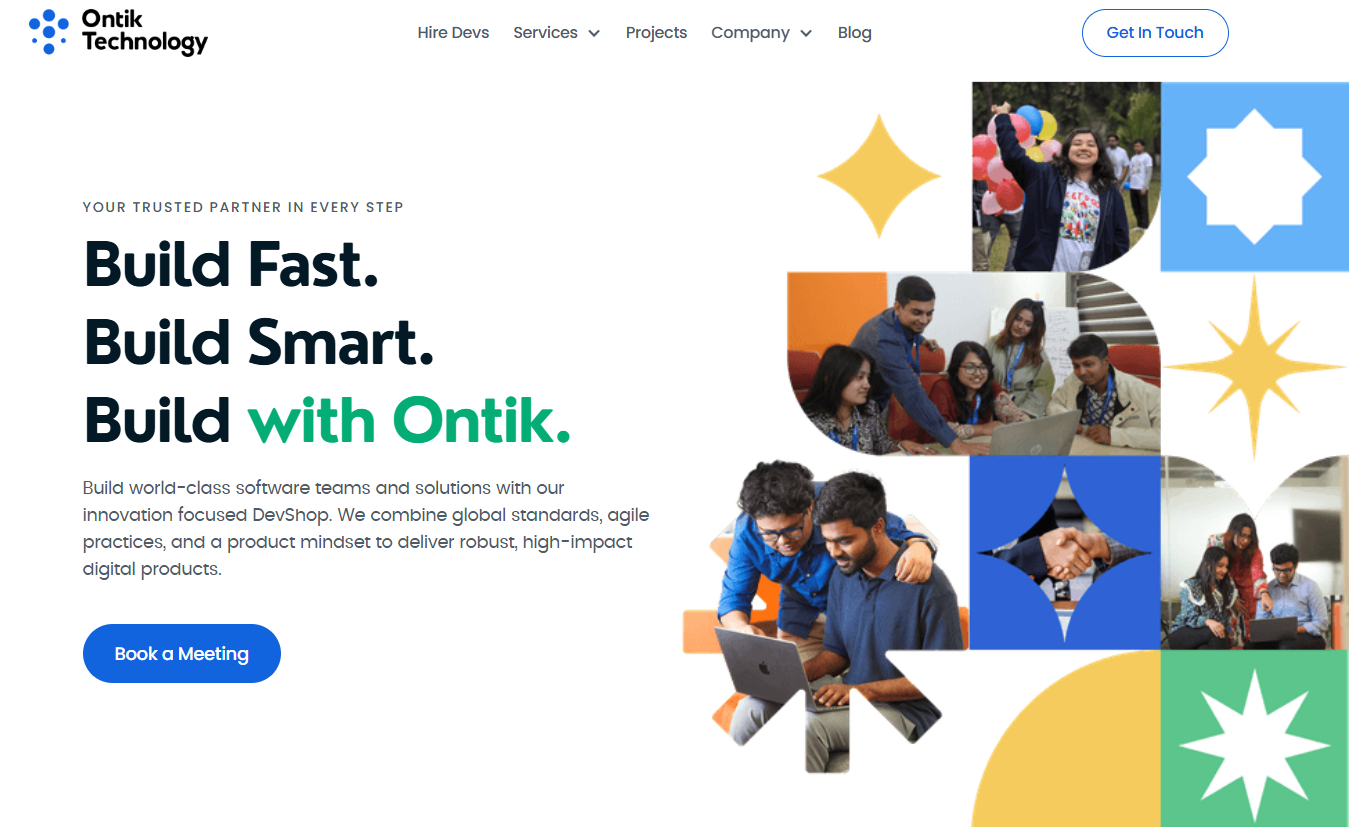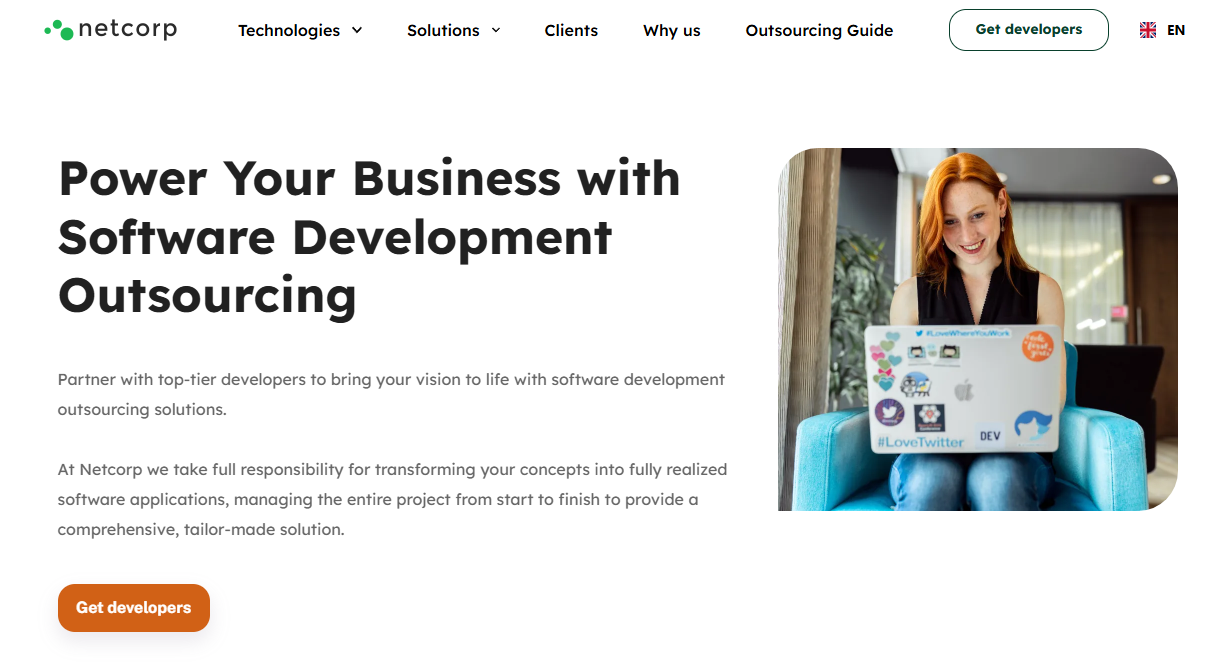Outsourcing MVP Development: Strategic Guide to Success for Startups
Outsourcing MVP Development: Strategic Guide to Success for Startups
Aiming to launch a new product? The key to success lies in understanding the power of MVP Development for startups. MVP isn't just a tech buzzword – it's a game-changer.
Basically, MVP is all about crafting and testing your product ideas, gathering feedback, and building something basic yet functional to see if it resonates with your target audience. In our discussion, we’ll explore everything related to MVP development for startups to help you succeed in your business.
What’s in store for you?
- What is MVP in Business
- How do I determine if my startup idea is suitable for an MVP?
- Steps of Building an MVP
- Principles of MVP for Startups
- Why should Startups build their MVP first?
- Types of MVP for Startup Companies
- How to Choose the Right MVP Development Approach for Your Startup Company
- MVP Development Tools and Technologies
- Step-by-step process for MVP Development Process
- Best MVP Development Practices for Startups
- Challenges & pitfalls of MVP Developments for Startups
- Why Should Startups Outsource MVP Development?
- What is a post-MVP in a startup?
- Examples of Successful MVPs
- 5 Winning Tips for Building A Successful MVP
- Conclusion
- Hire Talented Developers from Ontik Technology
- Frequently Asked Questions
What is an MVP in business?
An MVP (Minimum Viable Product) is the most basic version of a product that has enough features to attract early users and meet their needs. In the meantime, it's like a test version that helps you understand your customers' demands and interests.
So, instead of investing a lot of time and resources into making the fanciest product right away, you start with a simple one. If people love it, you can then add more advanced features to make it even better based on your client’s feedback.
For example, if you have an idea for a restaurant-finding app, you can add more advanced features like – suggesting restaurants based on the user’s mood, and type or suggesting restaurants with different scenic views. you can include some really cool off-the-shelf AI features that can suggest restaurants to users based on a user’s mood or type, or can suggest restaurants with a view of the Pyramid. But you should
But before you go for such cool stuff, you might start with a simple version showing a map with nearby restaurants. This basic version allows you to test if people find it useful and if they're willing to use it.
So, an MVP is like the first draft of a product or service. The initial product isn’t perfect, but it's good enough to test the waters and see if you're heading in the right direction. It's like dipping your toes in the water before diving in.
From there, you can gather feedback, make improvements, and gradually add more features until you have a polished final product.
How do I determine if my startup idea is suitable for an MVP?
Wondering if your startup idea is MVP-ready? Start by asking yourself. Does it solve a real problem or meet a market need? If the answer is yes, it's MVP time!
Break down your concept into must-have features that showcase its essence. Think simplicity—focus on the core value. Consider the tech side too; can you implement these features quickly?
Software development MVPs are all about testing assumptions. So if you have uncertainties, this is the perfect path.
Also, check out the competition and market dynamics. Make sure your MVP has that unique spark. It's like dipping your toes in the water before diving in. MVP Development lets you test, get user feedback, and refine.
So, if your idea passes the friendliness, usability, and problem-solving tests, it's ready for MVP development. So, get in touch with our expert team and let your idea shine!
Steps of Building an MVP

How to build an MVP and software development for startups? There are some common steps in building and developing MVPs for startup apps. Here are the cool steps:
Step 1: Define Your Goals and Objectives
First, understand the problem you're solving and set clear goals for your MVP. Think about who you're helping and why. It will help you to build a good MVP.
Step 2: Market Research
For MVP development for tech startups, explore what's already out there. Know your competition and find gaps in the market that your product can fill.
Step 3: Identify Core Features
Time to list down the must-have features that directly address the main problem. Keep it simple and focused.
Step 4: Create a User Flow
Map out how users will navigate through your product. Make sure it aligns with your core features. With the right user flow, you can build a successful MVP.
Step 5: Design the User Interface (UI)
Sketch a basic design with user-friendliness in mind. Think about how users will interact with each element.
Step 6: Select Technology Stack
This step is a crucial step in MVP building. So, choose the right tools and technologies for your MVP. Consider what will help you build efficiently and scale later.
Step 7: Development
It's time to start building. Make sure to keep it agile. Prioritize your core features and stay open to quick adjustments.
Step 8: Test and Repeat
After you finish the development phase, share your MVP with a small group. Listen to their feedback and be ready to make improvements.
Step 9: Refine and Add Features
Put a full stop to your worries on how to build an MVP for startup. Simply, plan your launch and share your MVP with a wider audience. Based on feedback, refine what you have and consider adding features that users are asking for.
Step 10: Gather Analytics and Feedback
Finally, use analytics tools to track user behavior. Keep gathering feedback and making those friendly, user-focused tweaks.
Remember, building an MVP is like starting a conversation with your users. You're listening, adapting, and creating something that truly solves their problems.
Principles of MVP for Startups
The principles of Minimum Viable Product (MVP) development for startups revolve around the concept of quickly delivering a product. Here, you deliver the product with the minimum set of features needed to satisfy early adopters and gather valuable feedback.

Here are some fundamental principles of MVP for startups:
- Identifying and understanding core problems
- Listing and prioritizing key features
- Developing essential features
- Testing with a small group for feedback
- Establishing a feedback channel
- Tracking key performance indicators (KPIs)
- Being flexible and adapting to feedback
- Minimizing initial costs
- Keeping stakeholders informed
- Planning for scalable growth
- Complying with regulations and protecting IP
- Building strong relationships with early users
Why should Startups build their MVP first?

Building MVP is a game-changer for your startup journey! But why? Here are the top 5 reasons shared by professionals from our team.
- MVP allows quick feedback to make improvements
- Saves money and time by starting with a simple version
- Identifies and fixes problems early on
- Ensures the final product meets customer needs
- A step-by-step approach for building a successful business
Additionally, MVP acts as an early detective, identifying and addressing potential issues in the initial stages of development. This preemptive problem-solving prevents costly setbacks in later phases, promoting a smoother overall development process.
Types of MVP for Startup Companies

There are various types of Minimum Viable Products (MVPs) to choose from, and understanding each one can help you figure out the best fit for your company. Let’s explore all the types.
High Fidelity MVP
Let’s talk about High Fidelity MVP. This kind of MVP is like making a model that looks almost exactly like the real thing. It has all the cool features, a polished design, and a user interface (UI) that closely mirrors the intended end product.

As a result, high-fidelity MVPs help startups or established companies to gather detailed user feedback on the actual product experience. Let's explore various forms of high-fidelity Minimum Viable Products (MVPs) for better understanding.
- Single Featured MVP
A single-featured MVP concentrates on one key aspect. This minimalistic approach lets the team swiftly validate a specific functionality. As a result, startups or established companies don’t need to invest in the entire product development process upfront.
- Digital Test-study MVP
A Digital Test-study MVP creates a digital product version for testing. It incorporates prototypes, simulations, or interactive models. The aim is to assess startups or established companies interactions and gather insights before committing to full-scale development.
- Wizard of Oz
In a Wizard of Oz MVP, product functionality is simulated or operated by humans behind the scenes. It creates the illusion of a fully automated product. This approach enables testing user reactions and validating concepts without substantial investments in automated processes.
- Crowdfunding Campaign
Crowdfunding MVP initiates a campaign to gauge interest and secure funding before full development. It involves presenting the idea and potential features to the public. The goal is to assess demand and collect financial support, determining whether to proceed with development.
- Concierge MVP
A Concierge MVP delivers a personalized, hands-on experience to users. It often requires manual effort from the development team to simulate specific features. This method validates demand and gathers user feedback without committing to fully developing automated features.
- Piecemeal MVP
Piecemeal MVP builds the product incrementally, piece by piece. It enables iterative development, with each component serving as a small, testable part of the overall concept. This approach assists in validating different aspects of the product progressively.
Each MVP type has its advantages and fits various scenarios in product development. The choice depends on your startups or established companies’ goals, resources, and the specific aspects needing validation.
Low Fidelity MVP
Simple test versions of products are called low-fidelity MVPs. It is the minimalistic prototypes that lack advanced features and a polished design. You can aim to quickly test core concepts and gather initial feedback without extensive development efforts. Thus, this not only saves time but also keeps costs down.

To know how to choose the suitable MVP development approach for your business product, you must know about the MVP types well. So, let's explore the different low-fidelity MVP types for your business.
- Landing Page or Fake Door MVP
The Fake-door MVP concept tests initial product-market fit without actual development. It presents the idea as if the product is in progress. Landing page MVP, a common type, creates a page to promote the idea and gather user contacts, assessing potential interest.
- Email Campaign MVP
The Email Campaign MVP is similar to a Fake-door type. It lets you gauge interest without developing the app. You send an email describing your product idea and benefits to check if your audience reacts positively. This kind of MVP lets you understand the client’s demand without spending money on development. This is also one of the time-saving procedures.
- Customer Interviews
This method involves talking directly to people who might use your product. You ask them questions about their needs, preferences, and pain points to gather insights. It's like having a conversation to understand if your solution aligns with what they're looking for.
- Blogs MVP
Blogs as short stories that introduce your idea to the world are one of the low MVPs. You can share your thoughts, insights, or updates related to your product more casually and informally. Blogs can also help build awareness and attract people who are interested in the problems your product solves.
- Forums MVP
Forums are like virtual meeting places where people discuss various topics. Participating in relevant forums allows you to share your ideas, ask for feedback, and engage with potential users. It's akin to attending a community gathering to understand what people think about your concept.
- Explaining Video MVP
This MVP is all about making a short video that illustrates what your product is. It's a visual way to tell your story and showcase the value of your idea. This could be a simple animation or a presentation to give potential users a quick understanding of your solution.
- Paper Prototypes MVP
Complicated things can be presented more easily in a visual way. And that’s when you go for the paper prototype MVP. It’s like sketching your product idea on paper, like drawing a map before building a house. Paper prototypes help you visualize and share your concept in a simple, low-cost way. It's like having a rough draft of your product that you can use to gather feedback and make improvements.
These low-fidelity MVPs (Minimum Viable Products) are like testing grounds, helping you validate your ideas without investing too much upfront. They allow you to learn and adapt before fully committing to the development of a polished product.
How to Choose the Right MVP Development Approach for Your Startup Company

Choosing the right MVP Development approach is crucial for your startup company. It directly affects your product's acceptance in the market. So, for a smooth take-off, you must consider the following factors to decide on the right approach.
Development Time
Speed is crucial for your startup, so consider a MVP development approach that allows for rapid iteration and deployment. Techniques like rapid prototyping or using low-code/no-code platforms can expedite the development process. For more specific details on MVP development approach, the expert team at Ontik Technologies can provide the best assistance.
Development Budget
Planning your startup and MVP budget can be a real challenge for startup businesses. However, if you're lucky enough not to have any budget constraints, you can opt for the best MVP approach that suits your needs. On the other hand, if budget is a concern, you might want to consider choosing an MVP type with lower costs.
Purpose
Identify the must-have features that define your product's core functionality. Prioritize these features to ensure that the MVP effectively showcases the unique selling points of your product.
Functionality
Prioritize a seamless and intuitive user experience. Even in a minimal version, the product should be user-friendly and provide value to early adopters. A positive user experience can drive user engagement and feedback.
User Experience (UX)
Prioritize a seamless and intuitive user experience. Even in a minimal version, the product should be user-friendly and provide value to early adopters. A positive user experience can drive user engagement and feedback.
Technology Stack for Development
Choose a technology stack that aligns with your long-term vision for scalability. While the focus is on building a minimum viable product, using scalable technologies can save time and effort when transitioning to a more robust product in the future.
By carefully considering these factors, you can choose the MVP development approach that best aligns with your startup's goals, resources, and market expectations. Got more questions? Contact Ontik Technology for expert advice.
MVP Development Tools and Technologies
Let's check out some cool tools and technologies for building MVP software and development. Ready for a quick glance? Keep scrolling!
Selecting Technologies
When it comes to building your MVP, you've got a bunch of cool tech options like HTML, CSS, JavaScript, Node.js, Python with Django or Flask, Ruby on Rails, and more. For the best fit for your startup, why not have a chat with our tech team? Our team of experts can guide you on the perfect choice.
Selecting Tools
MVP development tools and technologies can vary based on the specific requirements of your project. However, here are some commonly used tools and technologies for building Minimum Viable Products.
For example, Ruby on Rails, React.js (for front-end), Node.js (for back-end), Git (GitHub, GitLab), Travis CI, etc are some of the functional requirements for MVP.
Step-By-Step Process for MVP Development Process

Let’s break down the MVP development process. It will help you to understand the phases more clearly. And you will have a clearer idea of how we help you with the development procedure.
Idea generation
In this phase, the initial concept for the product is conceived. We'll have brainstorming sessions, figure out what problems your users are facing, consider what they need, and check if our ideas are doable and make sense.
Market Research
Next, we'll do some detective work to make sure our idea is on the right track. We'll look at what's happening in the market, see who your competitors are, find out what's trending, gather user data, and spot any challenges or opportunities out there.
Build a User Flow and Design MVP
In this phase we will plan your product journey! We will also map out how users will go through it and Create cool wireframes and prototypes. Then we will design a user-friendly interface. Finally, it’s time to make it perfect.
Test and Develop MVP
Now, let's build a basic version of our product to test the waters. We'll focus on the essential features, test it internally, make improvements based on feedback, and ensure it meets the minimum requirements to make it work.
Launch the Product and Work on Feedback
Time to show off your MVP to the world! Start small with a limited audience or beta release. Ask users for feedback through surveys and reviews. Watch how they engage and behave. Improve based on what users tell you!
Best MVP Development Practices for Startups

If you're all pumped up about creating the first version of your product (we call it Minimum Viable Product or MVP), you're in for a ride! No worries if you're new to this – we've got your back with some easy-to-follow tips.
- Simplicity First: One of the MVP best practices is Simplicity. Kick off with a straightforward MVP featuring only the most crucial features. This speeds up development and testing. You know the phrase, ‘simple but effective’, right?
- Core Value Focus: Keep your MVP laser-focused on delivering its core value proposition. Avoid adding unnecessary features that could complicate things.
- Prototyping Speed: Develop quick prototypes to visualize and test concepts before investing heavily in full-scale development. It helps in refining ideas early on.
- Thorough Testing: Another important MVP development practice is to conduct rigorous testing to identify and address bugs or usability issues. A reliable MVP starts with a solid foundation.
- Continuous Improvement: You need an iterative development process to build startup MVP. So, regularly update and refine your MVP based on user feedback and market trends.
- Data-Driven Insights: Integrate analytics tools early on to track user behavior. This data provides valuable insights for ongoing improvements. It’s one of the best practices for MVP development.
- Security Matters: Another significant MVP development practice is prioritizing security features to protect user data. A secure MVP builds trust and safeguards your users' information.
- Device Compatibility: Ensure your MVP is responsive and works seamlessly across various devices. Accessibility is key to user satisfaction.
- Cost Awareness: You cannot miss this one? Keep a close eye on development costs. Make informed decisions to avoid unnecessary expenditures.
- Future-Ready Planning: Last but not the least, anticipate future developments and design your MVP with scalability and future enhancements in mind. Stay ahead of the game.
Challenges & pitfalls of MVP Developments for Startups
Thinking about MVP developments for your startup? It's crucial to be aware of the challenges of MVP that might come your way.

Let's navigate through them with a friendly touch:
Overloading Features:
- One common pitfall is trying to pack too many features into your MVP. Remember, it's about the minimum viable product, not the maximum possible product. Focus on the essentials that demonstrate your core value proposition.
Ignoring User Feedback:
- Your users are your best guides. Not paying attention to their feedback and usage patterns can be a serious misstep. Use this valuable information to iterate and refine your product.
Rushed Timelines:
- Building an MVP is exciting, but resist the urge to rush the development process. Quality takes time, and pushing for unrealistic deadlines may compromise the integrity of your product.
Lack of Scalability Planning:
- Your MVP is just the beginning. Think about the future and design your product with scalability in mind. An unexpected influx of users can be overwhelming if your system isn’t prepared.
Incomplete Market Research:
- Before you start building, ensure you've thoroughly researched your target market. Ignoring this step might result in developing a product that doesn't quite fit the needs or preferences of your potential users.
Tech Stack Oversights:
- Choosing the wrong technology stack can lead to issues down the road. Make informed decisions based on your long-term vision, considering factors like scalability, maintenance, and community support.
Underestimating Testing Importance:
- Testing is not the place to cut corners. Skipping thorough testing can lead to a host of problems, from user dissatisfaction to potential security vulnerabilities.
Poor Communication within the Team:
- Clear communication is the backbone of successful development. Ensure everyone on the team understands the vision, their roles, and the timeline to avoid misunderstandings and delays.
Not Adapting the Changes:
- While passion is crucial, be open to adapting your MVP based on user feedback and market trends. Sometimes, what you initially thought was a game-changer might need tweaking.
Ignoring Marketing:
- Launching your MVP is not the finish line; it's a new starting point. Develop a marketing strategy to create awareness and attract users. A great product needs effective promotion.
Why Should Startups Outsource MVP Development?
Many people ask, should I outsource MVP development or hire startup mvp developers? Well, the answer is yes, you can. Choosing to outsource MVP development is a smart move for startups! It opens the door to a global pool of talented experts, saving costs on hiring and infrastructure. Plus, outsourcing ensures a speedy MVP launch, getting your innovative ideas to market faster. The flexibility to scale up or down based on your project needs is a game-changer. It gives you the agility to adapt quickly. Partnering with experienced outsourcing providers brings in proven methodologies, enhancing the quality of your product. It's like having a development dream team without the hassle! So, go ahead, focus on your brilliant ideas, and let the experts handle the rest. Hire startup MVP developer right away.
What is a post-MVP in a startup?
After a startup releases its first version called MVP (Minimum Viable Product), the post-MVP phase comes into play. This is the time after the initial launch when the focus shifts to improving and expanding the product based on feedback from users. Think of it like taking a first draft and making it even better. In this phase, startups prioritize features based on what users have said, fix any issues, and add new things to make the product more appealing.
The goal of MVP software development services is to grow the number of people using the product, find ways to make money, and make sure the product is a perfect fit for what users want. It's a bit like planting a seed, seeing how it grows, and then adjusting to make sure it turns into a strong and successful plant.
This process is ongoing when it comes to MVP development. Here, the startup companies learn from users, making changes, and aiming for long-term success by constantly improving the product.
Examples of Successful MVPs

Looking for MVP startup example? We've got a cool list of 8 successful MVPs to share with you. It's like a collection of startup superheroes! We put this together to help you see what makes a great MVP (Minimum Viable Product).
1. Dropbox
One of the best startup MVP examples is Dropbox. Imagine having all your files accessible from any device! That's what Dropbox nailed with its MVP. They made sharing and syncing files a breeze, turning the headache of storage into a simple joy.
2. Airbnb
Airbnb can be a great example of MVP development for startups. Airbnb transformed spare rooms into cozy stays. Their MVP system software turned regular folks into hosts, creating a sharing community. It's like turning your home into a welcoming hotel for travelers.
3. Twitter
Want to build software MVP like twitter? Let's take a look at where they started. Twitter's MVP software solutions brought the world of short and snappy updates. Think of it like mini-journaling, where you share your thoughts and follow others in bite-sized pieces. Quick, easy, and addictively fun!
4. Spotify
Spotify's MVP was a music lover's dream. They gave us a library of tunes with a cool twist – free tunes with ads or go premium. It's like having a DJ tailor music just for you.
5. Instagram
Instagram's MVP made photo sharing a trend. Imagine taking a photo, adding cool filters, and sharing it instantly. It made ordinary moments extraordinary, all from your phone.
6. Uber
Uber's MVP revolutionized getting a ride. No more waving on the street – just tap your phone for a ride. It's like having a personal driver in your pocket whenever you need it.
7. Groupon
Groupon's MVP made group discounts a thing. Rally your friends, and boom, big discounts on cool stuff. It's like a digital coupon book, making every purchase a group celebration.
8. Amazon
Amazon's MVP started with books but became an online megastore. They made shopping a click away. It's like having the world's largest mall in your living room, with everything just a search away.
5 Winning Tips for Building A Successful MVP

Excited about building your own MVP after checking out those cool success stories? Here are 5 friendly tips to help you make your MVP a winner:
- Identify Core Features: Start small and focus on the essential features that directly address the core problem your product aims to solve. This ensures a quicker development process and allows you to get your MVP into the hands of users faster.
- User Feedback is Gold: The key to a successful MVP lies in user feedback. Launch your MVP early, gather insights, and be open to adapting based on what users are saying. This iterative process helps in refining your product according to actual user needs.
- Keep It Simple: Simplicity is the name of the game. A successful MVP doesn't need all the bells and whistles. Aim for a user-friendly, straightforward experience that clearly demonstrates your product's value proposition.
- Rapid Development and Iteration: Speed is crucial. Aim for a quick development cycle to get your MVP out swiftly. Learn from user feedback and iterate on your product efficiently. This agility is a key advantage for startups.
- Focus on the Problem, Not the Solution: Ensure your MVP is centered around solving a real problem for users. Concentrate on understanding the pain points and delivering a solution that truly resonates. This customer-centric approach is fundamental to MVP success.
Hire Talented Developers from Ontik Technology
Need MVP development services or MVP technical support? Or, looking for an MVP development company? Ontik Technology is the place to be! Our super-friendly team is all set to help you out at every step of the way. We understand that starting something new can be a bit overwhelming, but don't worry - we've got your back! Our talented developers are like wizards with computers, and they're ready to turn your ideas into a real, working MVP. So, hire a dedicated software development team right away.

Whether you're just starting with a fresh idea or you're a big business wanting to try something new, our MVP designer and developer knows how to make things happen. We're all about making your project a success. So, what are you waiting for? Reach out to us for MVP Development for your business product, and let's make your cool idea come to life together!
Conclusion
In a nutshell, using MVP Development for startups is like testing the waters before diving in. It's a smart and money-saving way to try out your ideas. By rolling out simple versions and listening to what users think, startups can tweak and improve without breaking the bank. Following the friendly guidelines of Agile and Lean, startups can launch, learn, and adapt faster. It's not just about getting to market quickly; it's about creating something people really want. So, for startups, MVP is like a secret sauce for smart and successful beginnings.
Frequently Asked Questions (FAQ)
How can an MVP benefit startups and businesses?
An MVP (Minimum Viable Product) helps validate ideas, reduce development costs, gather user feedback and accelerate time-to-market. MVP development also allows startups and businesses to iterate based on real-world insights.
Is MVP Agile or Lean?
MVP aligns with Agile and Lean methods, focusing on iterative development, user collaboration, and efficient delivery of a basic but functional product.
Is an MVP only relevant for new product development?
MVP isn't just for new products; it works for improving existing products, entering new markets, and adjusting to changing customer needs.
What happens after the MVP stage in software development?
After MVP, development continues with constant updates and new features, responding to user feedback and market demands.
Can an MVP change significantly over time?
Yes, MVP startup development can evolve significantly, adapting to user input, market shifts, and business goals through continuous improvement and iteration. Already, different MVP development firms use different approaches.
What is MVP in software development?
MVP in software development stands for Minimum Viable Product. It's a strategy where a basic version of a product is quickly developed and launched to gather feedback, test assumptions, and meet essential user needs.




